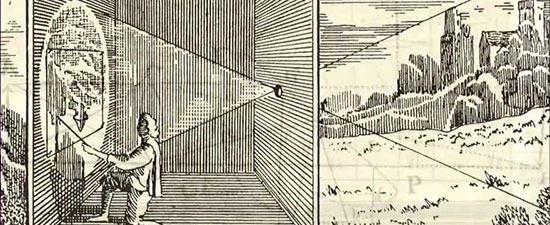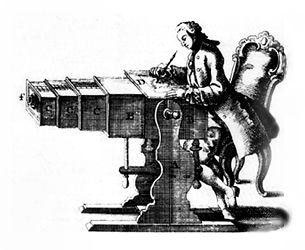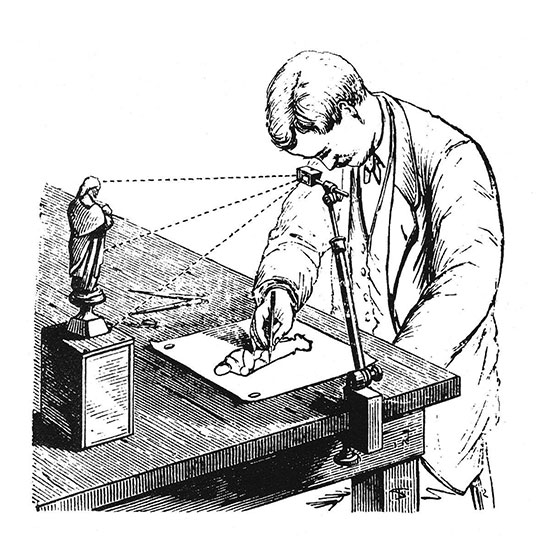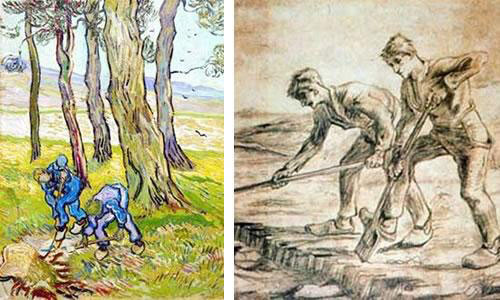The current strong survey exhibition, “From Lens to Eye to Hand: Photorealism 1969 to Today,” currently at the Parrish Art Museum raises a number of interesting questions and ideas but none is more compelling to me than trying to determine where and when the concept of photorealism in art got its start.
The time frame of the show’s title, from 1969 to today, coincides with the launching from California of a variety of typically banal imagery that had strong roots in SoCal art-making as far back as a decade earlier.
The earliest efforts in this kind of art were not restricted to painting but seemed to start with photography and then migrated to painting a few years later. Regional artists in all media were reproducing their dispassionate surrounds with the same delight that Jean Auguste Dominique Ingres painted his Grande Odalisque.
In the 1970s, the accepted wisdom about the genesis of photorealism had it that the the first step was the invention of the camera in the 19th century, with the new device displacing painting by its realism and speed. Then, a century and a half later, painters began projecting camera-generated images onto canvas and tracing the imagery, creating the first works of so-called photorealism.
As with many other threads of art history and different techniques and disciplines, there is an alternative narrative.
The camera, defined as a box with a lens that projects the image facing it onto an interior panel, was actually invented about 1550 and was called the camera obscura (Latin for “dark room”). Its immediate use was as an aid to painting, with the layout, or scene, projected onto a canvas allowing a new level of realism, especially in terms of perspective, which is largely unapparent to the unaided eye. Those living or visiting the East End today can see for themselves how this works by visiting a public camera obscura in Greenport Village on the North Fork—one of only five in the U.S. and 55 in the world open to the public—located in Mitchell Park where gazing at the waterfront is part of the view.
.

.
Fast forward to the 20th century, when British painter David Hockney noticed something unusual about old master paintings that had escaped notice despite the thousands of dissertations on the same: everyone is left-handed. This observation led him on a quest involving immense research, a large book, and a BBC special asserting that the old master painters had worked directly with cameras.
The physics of camera images flips the handedness; check any selfies and you will see in the image that the phone is being held in the opposite hand that you used. Hockney also noted that subjects painted as sitting in dark rooms—by Caravaggio, for example—have contracted pupils because they were really in the bright sunlight needed for the camera obscura to function.
.

Portable camera obscura
.
This was for Hockney the dead giveaway that the old masters did not possess special abilities we cannot duplicate; they just had increasingly better lenses and were projecting their images much like painters today. As the lenses improved the paintings became closer to realism, or even photorealism. Enter the camera lucida circa 1611, a smaller device that allows the image to be projected onto paper but the projection is viewable only by the artist and invisible to the paying subject, hence the artist’s Secret Knowledge, which was the title Hockney gave to his book on the subject.
.

Camera lucida
.
The camera lucida does not flip handedness but adds other optical traces such as chromatic aberration. Van Gogh was using some sort of optical assistance in the late 19th century and 85 percent (yes, someone counted them) of his figures are left handed.
.

Vincent Van Gogh, detail of two paintings.
.
But by a mile the first photorealists were the Dutch painters of the 17th century, such as Gerrit van Honsthorst, whose 1623 camera-generated images appear as photographic as if shot last week with a Nikon. Shown here in B&W for effect:
.

"The Happy Fiddler" by Gerrit van Honthorst, 1623.
.
After Hockney broke the bad news for art historians and others enamored of Dutch Golden Age painting in “Secret Knowledge,” the pile-on happened quickly. The magic and comedy team Penn & Teller, who have also made a secondary career out of irreverent skepticism, made a documentary about an unimaginable hypothesis: that an engineer with zero art training or experience, Tim Jenison, could duplicate the The Music Lesson by Johan Vermeer, painting with a brush from life and using only items available in 17th century Holland.
The riveting movie, “Tim’s Vermeer,” is a thought provoking bit of history illumination. Working with British architecture professor Philip Steadman, the author of “Vermeer’s Camera” and another non-artist, Jenison first developed a camera obscura and a mirror setup and then made a photorealist portrait of his father-in-law.
Then, working with lenses he made using only 17th century tools, his own pigments from ingredients found in Delft, and furniture made with 17th century tools, Jenison first recreated the room in Vermeer’s painting and then painted it using a camera lucida as Vermeer could have. Below is Jenison’s version:
.

Left: "Music Lesson" by Tim Jenison, 2013. Right: "The Music Lesson" by Johannes Vermeer, 1665.
.
Not the camera, but camera film of a sort was invented in 1823 and realism was now the provenance of photographers. Painters had to go off and do something else, hence the long history of modernism. The reappearance of projected camera paintings in the late 1960s was hardly a new idea, it was actually a very old one.
_________________________
To read a Hamptons Art Hub review of “From Lens to Eye to Hand: Photorealism 1969 to Today,” visit "ART REVIEW: The Mystery and Magic of Photorealism at Parrish Art Museum."
__________________________
Copyright 2017 Hamptons Art Hub LLC. All rights reserved.
